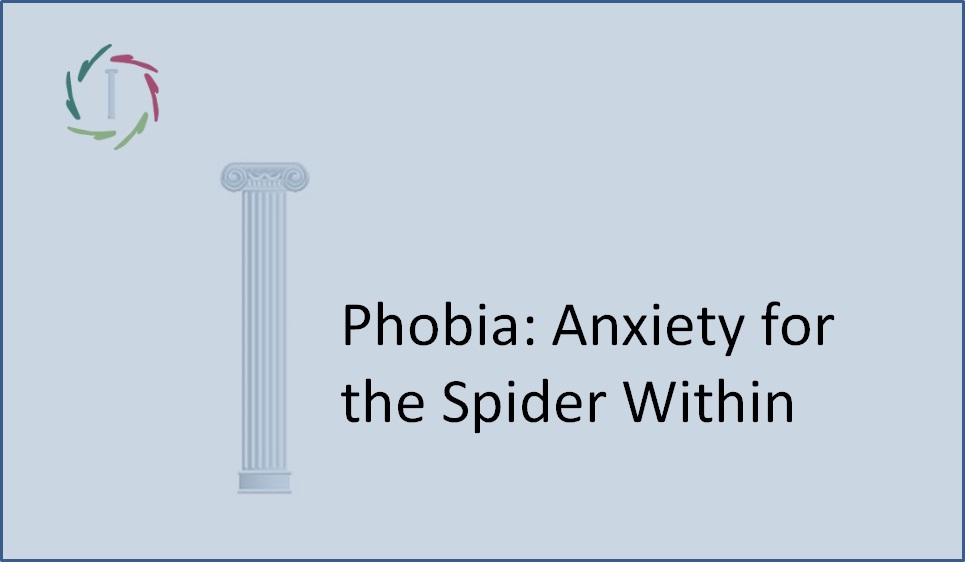33. Phobia: Anxiety for the Spider Within

The real spider is present in the phobic person himself.
Anxiety is not the same as fear
I ‘get a little scared’ when I see the dentist approaching with his squirt. There are more pleasant situations. There is a little fear involved. Someone who faints at the idea or the sight of a syringe, however, has more than fear. He has anxiety. This is not ‘more fear’ , but indeed ‘more than fear’.
Anxiety comes from deeper. It’s not something you have. Rather: anxiety has you.
You notice this in a sense of loss of control that suddenly overtakes you. Anxiety is not rational. In the case of a phobia, it is dispropotional to the object of anxiety. It is not the object of anxiety that is arousing the anxiety. The object (a syringe, a spider…) is ‘only’ a symbol. What really frightens is what that symbol stands for. So we end up in the ‘symbolic world’ of the deeper psyche.
In case of fear, one ‘safely’ stays at the surface.
The fear of the one is easily understandable to the other. Fear is not being seen as something pathological . A phobia is, though. A coward in the army, for example, is expected to get the sanction he deserves. A phobic gets therapy. Fear is seen as a natural given, something you can surpass but that is yet supposed to be inherently present. A phobic anxiety rather gets the aura of an ‘illness’ in the sense of: patient PLUS ‘illness’ MINUS ‘illness’ = patient.
The most commonly used psychotherapy
In case of phobic annxiety is (cognitive) behavioral therapy. That therapy is essentially based on the halo as described above. The goal is to plug the anxiety out of the person. Perhaps this causes a psychic wound but that wil surely heal. As it does with cutting out a tumor.
The phobia itself is, just like a tumor, not being considered to be of any further interest.
The success of the therapy is measured by the number of people who reach the goal and how long they can keep this up. It’s generally not being investigated to what extent this may lead to, for example, the occurrence of a depression or psychosomatic symptoms later on. This would of course also be quite difficult to utterly impossible. All the more since one should, to be really meaningful, set up such research in a prospective way and while avoiding a multiplicity of confounding factors.
An impossible research results in impossible conclusions.
The fact that something cannot be proven a priori does not prove that it doesn’t exist. This is a small (well…) fallacy that is often made by scientists of all kinds of backgrounds. Also in the world of medicine and psychotherapy. I know us. I am a physician too. We want to know so badly that we tend to forget that knowing to not know something is also important . So, we do not know it.
Talking with spiders
At least not through experimental science. The only thing we can do is thinking as rationally/logically as possible. That will also save us from logical fallacies such as the one mentioned here above. In general, experiments without logic can bring as little progress as anything else without logic. A hypothesis that has to be examined yet is that a phobic anxiety would be straightforwardly out-pluggable like a well delined ‘thing’. I fear that this is irrational. It is based on the ‘brain as a chest of drawers’ metaphor, which doesn’t match reality.
If we see the crux of a phobia at the symbolic level, we are able to find a solution at that level.
We should communicate with that level. And what could be better to this end than using the same symbol as the phobia itself? So in case of a phobia we should ‘talk with spiders’. We can do that by using an appropriate visualization. A feeling of anxiety is not necessary, perhaps even counterproductive. The spider is the interlocutor, the teacher, the guide.
The spider as an enemy that must be swatted to death? What madness!


